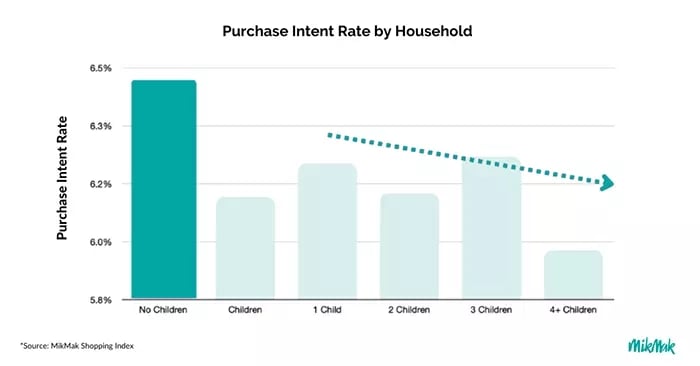Generation Z, or Gen Z for short, known colloquially as Zoomers are the first generation to have grown up with access to the internet and portable devices from a young age. Born between the 90s and early 2010s, many of these “digital natives” have adopted online shopping as part of their daily life.
Back in the day, the shopping mall might have been the place where you would discover or try new products. Today, the internet serves as the largest shopping mall; and with a purchase intent rate of 7 percent (1.3x higher than average), Gen Z shoppers are most likely to buy. This demographic cohort of shoppers is discovering new products from social media, sharing amongst their friends and followers, and taking chances on items they might not usually buy. Appealing to Gen Z could just be the ticket your brand needs to get people buzzing about your latest product.
So, what should you know about Gen Z shoppers? MikMak took a closer look.
Gen Z shoppers are diverse and female
When it comes to Gen Z, focus your marketing efforts not only on the age group, but also on the characteristics of people in that age group. The MikMak Shopping Index showed us that not only are Gen Z shoppers more likely to shop online, but of these digital-first shoppers, there are 2.2x more in-market female Gen Z shoppers than males. A deeper dive showed us that TikTok is one of the best places to reach these female shoppers. Why? Because on TikTok, female shoppers are responsible for 3.4x more page views, 5x more purchase intent clicks, and 1.5x higher purchase intent rate than male shoppers. So, when advertising your product to Gen Z females, consider leveraging TikTok as part of your social commerce strategy.
We also found that Hispanic-identifying and African American-identifying Gen Z shoppers have a purchase intent rate of 7.3 percent and 7.6 percent respectively which is 1.35x and 1.4x the current average. When marketing to Gen Z, being inclusive and paying attention to diverse representation could go a long way.
Childless households are most likely to shop online
According to the Population Reference Bureau, Gen Z (except Gen Alpha) is the least likely to have children right now. However, we also found that regardless of marital status and generation, households without children have the highest likelihood of shopping online.

To expand on this, we also found that purchase intent decreases for each child the household has (except households with three children).
This trend is one to keep an eye on as time progresses. Shoppers without children may be more likely to buy online due to them being single. If this is the case, this trend will look the same over years. However, since Gen Z is more likely to shop online, it is possible that as they enter new stages of their lives and begin to get married and have children, this trend may change. To stay in the know, look closely at how your brand's consumers' purchase intent rate changes over time and how this overlaps with other aspects of their shopping behavior. Getting to know your consumer could help you predict the future of your brand and your shopper’s habits.
Use impactful messaging over invasive marketing tactics
More so than any generation before them, Gen Z is keenly aware of online advertising. Spending an average of at least eight hours per day engaging with online content, Gen Z has grown accustomed to seeing advertisement upon advertisement every day.
While Gen Z understands the convenience of technology, they value digital privacy and are less likely to hand over personal data to companies that may later sell it. To avoid watching unwanted ads, 65 percent of Gen Z have some type of ad-blocking software installed, while 66 percent skip online ads whenever they can. So be selective about when and how you reach out to members of Generation Z. Gen Z’ers prioritize privacy, and too many ads can turn them off, making them less likely to buy what you’re selling.
When it comes to messaging, Gen Z believes their generation can make a difference in the world. For brands, this means that authentic messaging, social initiatives, and building trust with Gen Z shoppers can go a long way. Learn more about Gen Z, how they shop, and staying relevant among shoppers in our latest guide, “Closing the Gap: Staying Relevant to Consumers Across Generations”, available now.

